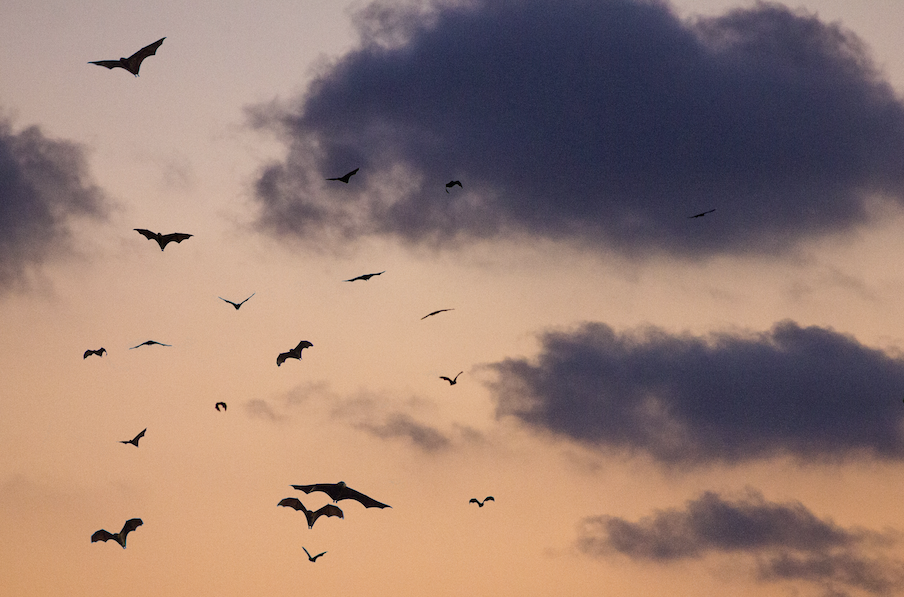A Brief History of the Bat City

The Ann W. Richards Congress Avenue Bridge is home to the largest urban colony of Mexican free-tailed bats who, in the warmer months, become a spectacled, flying frenzy. Watching those bats fly out from under the bridge at dusk is a cherished tradition by tourists and locals alike, and these days, the bats are some of Austin’s most treasured residents. However, it wasn’t always that way, as what was once considered a nuisance to the public has now become one of Austin’s calling cards and biggest drivers of nature-centered tourism.
The bats had always been in the Central Texas area, with the largest Mexican free-tailed bat colony on the outskirts of San Antonio at Bracken Cave. This collective population of bats is known to spend its winters in Mexico and then migrate north to spend its summers throughout Central Texas’ limestone caves.
So, the city of Austin had been battling what it labeled as “pests” since its founding in 1839. What brought them to the bridge was purely a case of accidental, architectural genius in 1980.
“People always ask why they aren’t under all the other bridges,” D.J. Cornwell, longtime bat tour guide of Lone Star Riverboat, says. “It’s because of the expansion gaps. They’re about two inches wide, two feet deep — the perfect bat roost.”
Within those crannies of the bridge’s underbelly, the humidity and temperature conditions are perfect for bat pups (bat newborns), so each spring and summer the expecting female bats set up shop. That’s why in the later months of September through November, the bat spectacle at dusk is significantly bigger — the new pups have joined in.
The city simply didn’t know what to do with itself as the population grew each year, and in 1984, three years after the bridge’s completion, it declared a public health crisis and began thinking of ways to block off the gaps. Austin would have done it, too, if not for the bat advocate that came to Austin on a mission to save the bats: bat expert, author and founder of Merlin Tuttle’s Bat Conservation, Merlin Tuttle.
It was actually Tuttle that led the campaign advocating the bats to the Austin public. He had traveled the world studying and promoting bats ever since he was a boy, having grown up down the road from a large bat cave. He even founded Bat Conservation International as a response to the lack of bat advocacy within other animal conservation organizations.
“I got involved in conserving bats because, as I was doing my research, I found that cave after cave would have been burned or bats intentionally destroyed, sometimes many thousands,” Tuttle says, “always by people who were misinformed by the health departments that the bats would transmit rabies or disease.”
Tuttle found through his efforts that with simple education on the importance and harmlessness of bats, people easily changed from wanting to exterminate bats to wanting to build bat houses on their properties.
“I had just begun to feel a hope that bats could be conserved when the headlines from coast to coast alleged sometimes hundreds of thousands of bats attacking the people of Austin — which wasn’t helping my conservation efforts,” Tuttle says. “So, I relocated BCI to Austin from Milwaukee.”
Once in Austin, it didn’t take long for the media interviews and the talks with leading citizens to help turn the tides in the bats’ favor. They highlighted the bats’ benefits in eating of the central Texas pests, such as the earworm moth, which targets a wide range of crops and mosquitos, and the fact that they rarely contract rabies and even more rarely transmit it to another animal.
“I found that all you have to do is be well informed, communicate clearly, and if you’ve got a good story, people will alter their behavior,” Tuttle says. “We were able to go from citizens so frightened of the bats to declaring Austin the Bat City.”
Now, Austin brings in more than $10 million in summer tourism annually and boasts the Bat City title with pride through art and references seen throughout the city.
“Bat tours are by far our most popular option,” Cornwell says. “It’s just one of those things that you have to do when you come to Austin — see the bats.”
There are several ways to watch the bats from standing on the bridge itself to finding a good vantage point at the Butler Hike-and-Bike Trail or Statesman Bat Observation Center. Take to the water on a kayak or paddle board to schedule a spot on one of the boat tours. The tours are a mix of fun and facts, as the guides take their time to point out the wealth of history and building in Austin as they await the moment that the bats begin to pour out from under the bridge. Once the bats start showing up, it can take anywhere from 10 to 30 minutes for them all to take flight and head off east into the sunset, creating a memorable and mesmerizing wonder.
The bat-watching season typically starts in March and runs until November when the bats make their way to Mexico — promising to return to the city that loves them once again in the spring.






